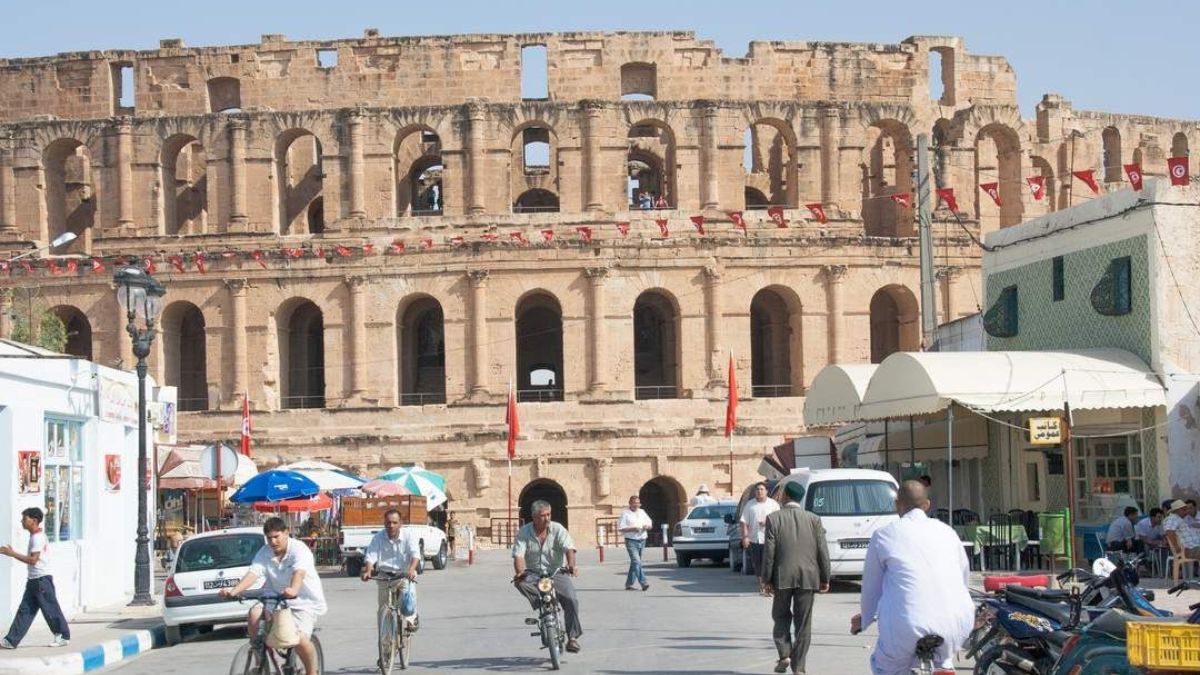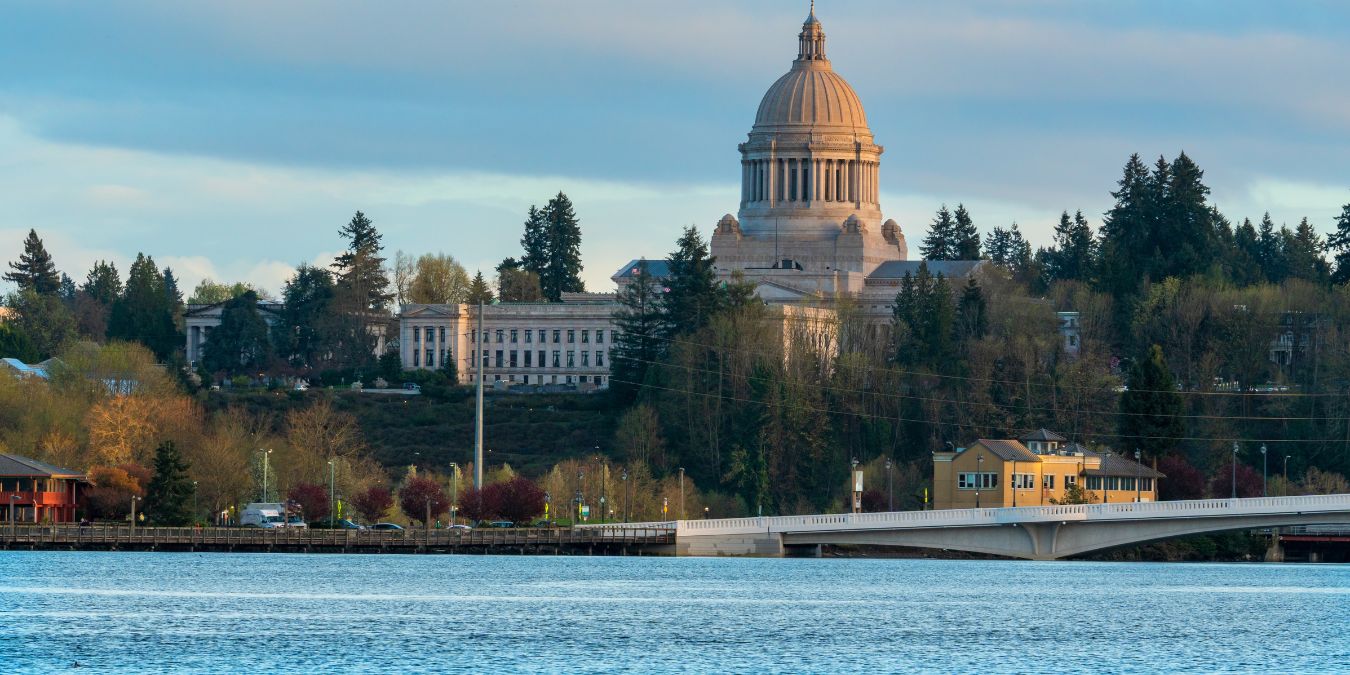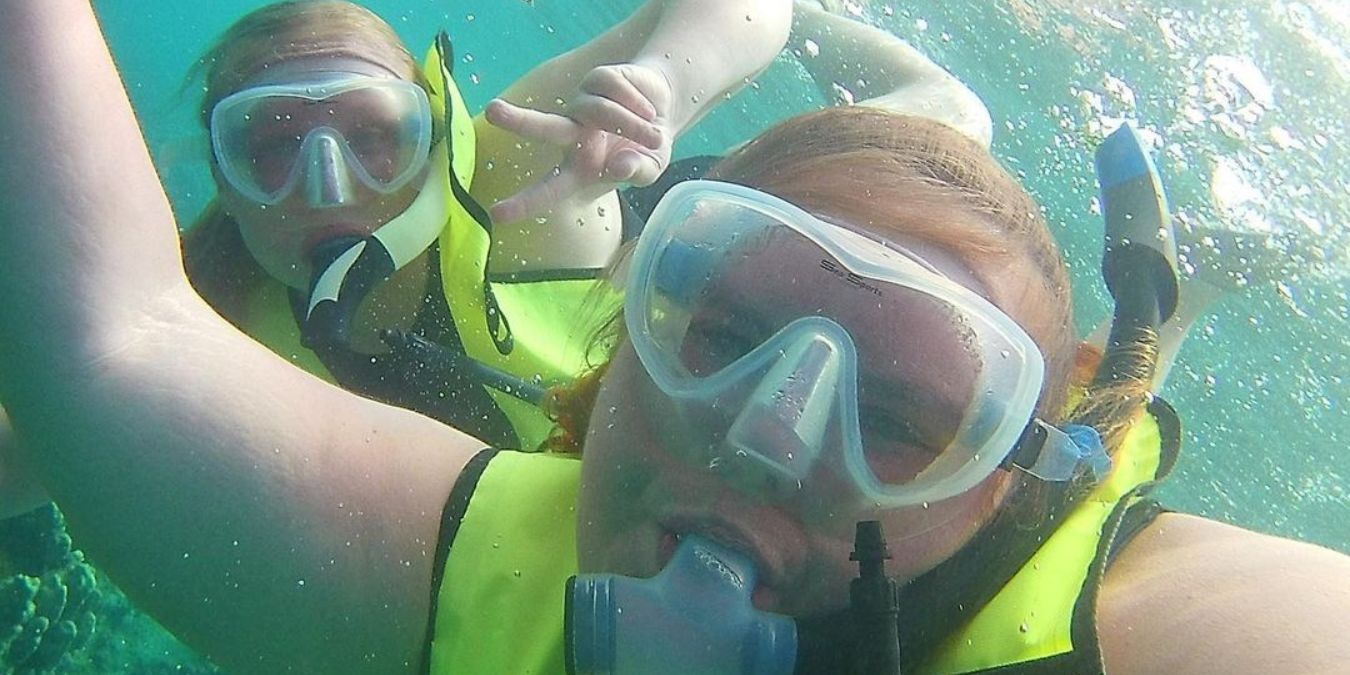El Djem is one of the most impressive Roman ruins in all of Africa. This vast amphitheater was once capable of seating 35,000 people and played host to some of the most popular events of the day. Even now, nearly 2,000 years later, it’s still an awe-inspiring sight.
There are several reasons why you should visit El Djem during your time in Tunisia. Firstly, it’s a great opportunity to see some incredible Roman architecture up close. The amphitheater has been very well preserved and provides a fascinating insight into how these huge structures were built.
Secondly, it’s simply a beautiful place to visit. The setting sun casts a golden glow over the stone seats and columns, making for a truly magical experience. Finally, it’s also worth visiting El Djem for its historical significance.
This was once an incredibly important site and is steeped in fascinating stories and legends.
El Djem Amphitheater is one of the most impressive and well-preserved Roman ruins in the world. It was built around 238 AD and could seat up to 35,000 people. The amphitheater was used for gladiatorial contests and public spectacles such as animal hunts.
Today, El Djem is a popular tourist destination. Visitors can explore the ruins of the amphitheater and imagine what it would have been like to witness a contest or spectacle here. The amphitheater is also a reminder of the great engineering feats accomplished by the ancient Romans.
 Why is the Amphitheatre of El Jem Important?
Why is the Amphitheatre of El Jem Important?
The Amphitheatre of El Jem is one of the largest and best-preserved Roman ruins in the world. It was built in the 3rd century AD and could seat up to 35,000 people. The amphitheater was used for gladiator fights, public executions, and other entertainment.
The Amphitheatre of El Jem is important because it is a great example of Roman engineering and architecture. It is also one of the few remaining structures from the Roman Empire that is still standing today.
Who Built El Djem?
El Djem is a Roman colosseum in the city of El Djem, Tunisia. It is one of the largest and best-preserved Roman ruins in the world. Built around 238 AD, it could seat up to 35,000 spectators.
The structure was built during the reign of the Roman Emperor Gordian III (r. 238-244 AD) and was dedicated to the Numidian king Masinissa. The name “El Djem” comes from the Arabic for “the gem”. The Colosseum was originally covered with a white marble facade.
However, this was later removed by looters looking for building materials. The outer walls are made of red brick, while the interior is faced with stone blocks. The upper levels have arched windows which would have allowed air to circulate within the building.
There are three stories tall and each story has eighty columns supporting them! Can you imagine how incredible this must have looked back when it was first constructed?
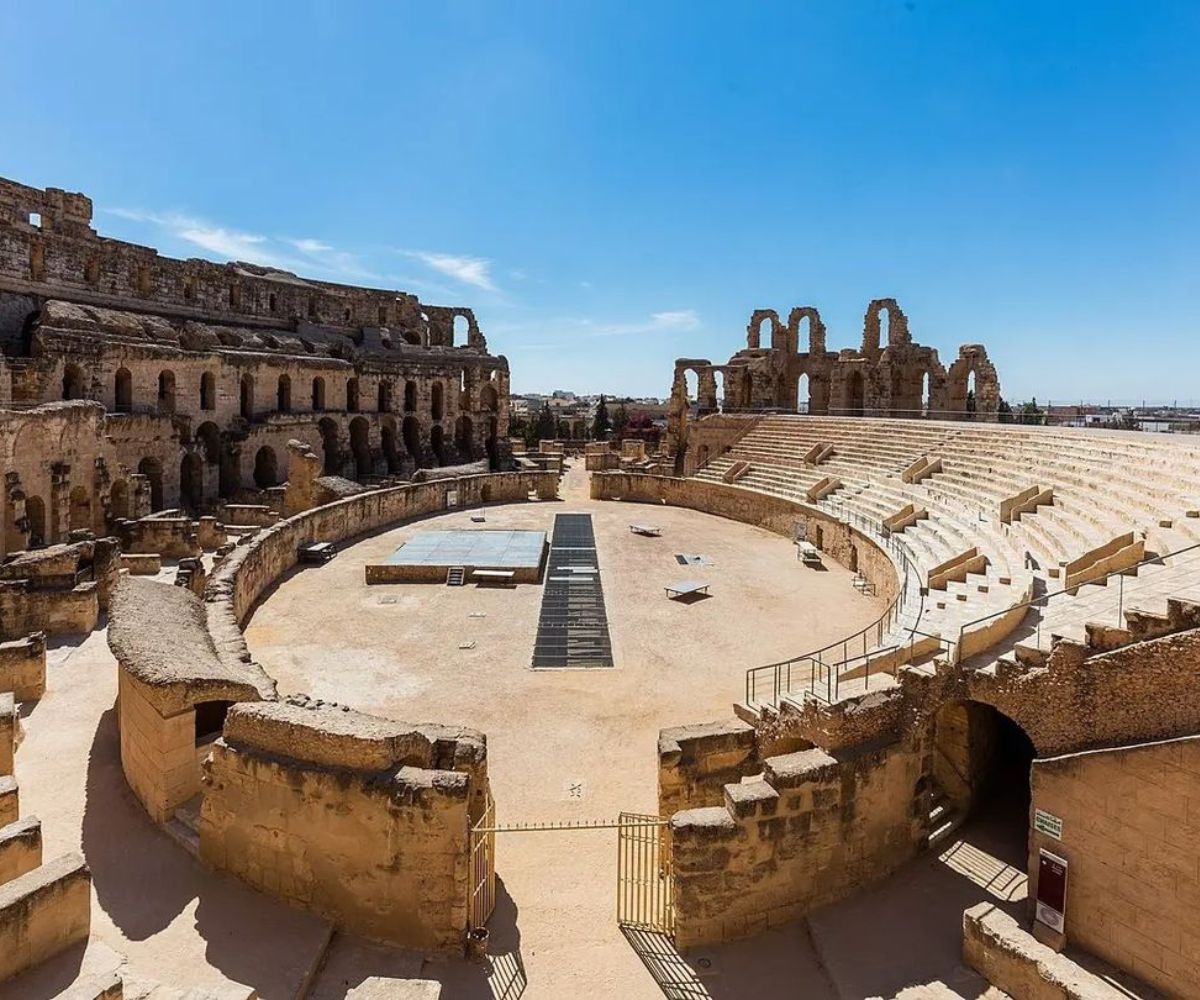
How Old is the Colosseum in Tunisia?
The Colosseum in Tunisia is a popular tourist destination and one of the most recognizable landmarks in the country. It is also one of the oldest surviving Roman ruins, with a construction date that is estimated to be around AD 79. This means that the Colosseum in Tunisia is almost 2,000 years old!
While its age is certainly impressive, it’s not the only thing that makes this ancient structure so special. The Colosseum was built to be a large amphitheater, and it could seat up to 35,000 people. It was used for a variety of events, including gladiator fights, public executions, and animal hunts.
Today, the Colosseum is a popular spot for tourists to visit and learn more about Roman history.
Where in Tunisia was Gladiator Filmed?
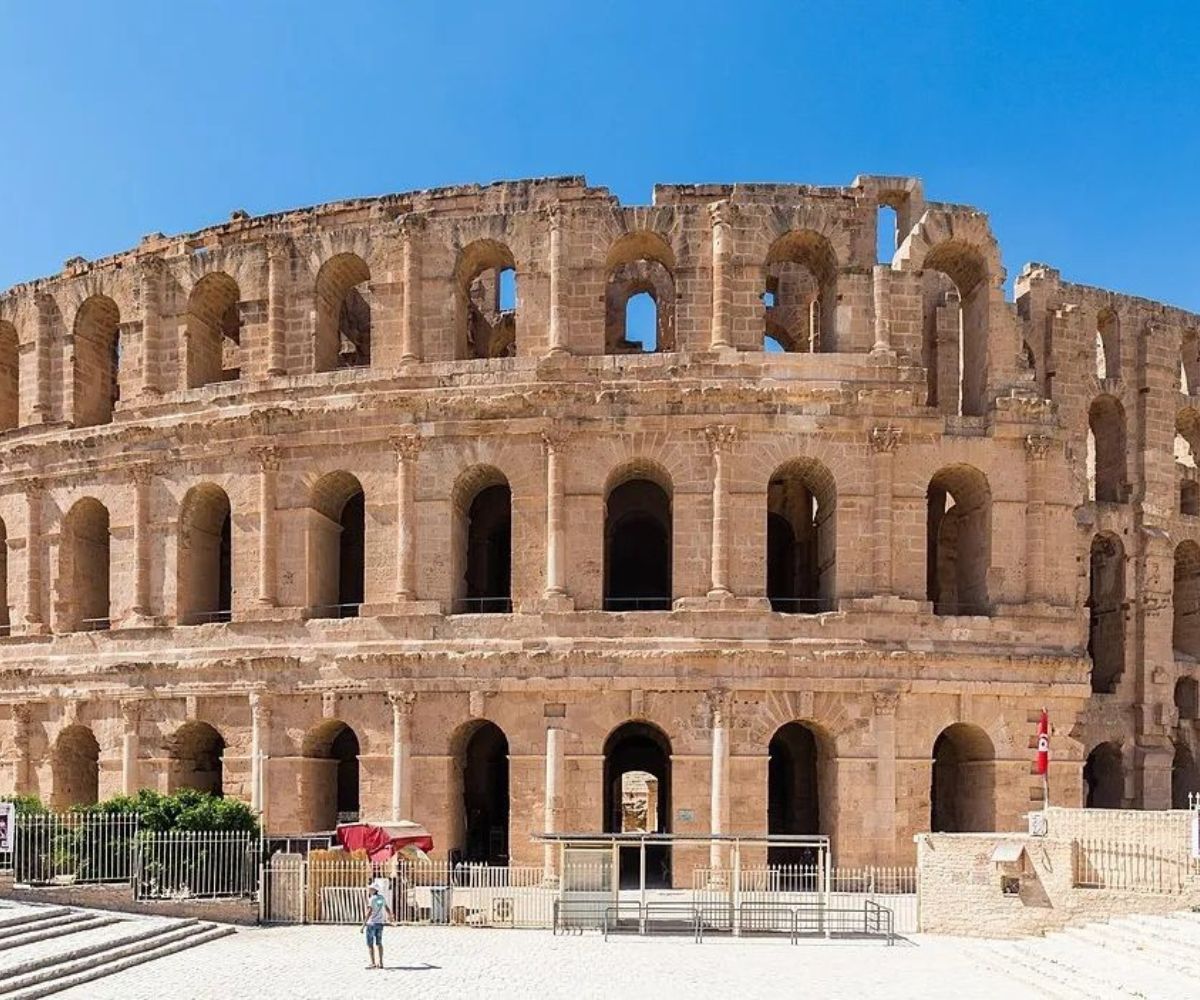
El Jem Tunisia
If you’re looking for a truly unique travel destination, look no further than El Jem, Tunisia. This small town is home to one of the most impressive Roman ruins in the world – the Colosseum of El Jem. This huge amphitheater was built in the 3rd century AD and could once seat up to 35,000 spectators.
It’s thought to have been used for gladiator fights and other public entertainment. Today, it’s a UNESCO World Heritage Site and well worth a visit. El Jem is located in central Tunisia, about 80km from the capital Tunis.
It’s easy to reach by road or rail – just be sure to allow plenty of time to explore this fascinating place!
El Jem Opening Hours
If you’re looking to explore one of Tunisia’s most impressive Roman ruins, a visit to El Jem is a must. This UNESCO World Heritage Site is home to the third-largest Colosseum in the world and is an incredible example of Roman engineering. Here’s what you need to know about visiting El Jem.
When to Visit El Jem is open every day from 8:30 am until 5 pm. The best time to visit is in the morning when it’s not as crowded and the temperatures are cooler.
Avoid visiting on weekends if possible as it can get very busy. Admission tickets can be purchased at the site or in advance online. What to See.
The star attraction at El Jem is, of course, the Colosseum which could once seat up to 35,000 people. It’s thought that around half a million people were killed or wounded during games held here. Today, you can explore this incredible structure and imagine what it would have been like back in its heyday.
Other highlights include the Forum, Baths of Trajan, and Temple of Mercury – all of which are worth a visit. Getting There El Jem is located around 80km from Tunis and can be reached by car or train from nearby Mahdia station.
Visit Tunisia
Are you looking for a travel destination that is both exotic and affordable? If so, Tunisia may be the perfect place for you! This North African country is known for its beautiful beaches, ancient ruins, and friendly people.
Best of all, it is relatively inexpensive to visit compared to other popular tourist destinations. When planning your trip, keep in mind that Tunisia is a Muslim country. This means that alcohol is not widely available, and women should dress modestly when in public.
With these cultural considerations in mind, let’s take a closer look at some of the best things to see and do in Tunisia. One of the most popular tourist attractions in Tunisia is the ancient city of Carthage. This well-preserved archaeological site was once one of the largest cities in the world.
Today, visitors can explore the ruins of this once-great civilization and learn about its fascinating history. If you’re looking for a Tunisian beach vacation, head to the resort town of Hammamet. Here you will find plenty of sandy beaches where you can relax and soak up the sun.
There are also several restaurants and cafes along the shore where you can enjoy fresh seafood or simply people-watch. For something truly unique, consider spending a night or two in a traditional Bedouin tent while visiting Tunisia’s Sahara Desert region. You’ll have an unforgettable experience sleeping under the stars in this vast and empty landscape.
Be sure to bring along plenty of sunscreen and water, as it can get very hot during the day!
Carthage, Tunisia
Carthage, Tunisia was founded in 814 BC by the Phoenicians. It is located on the eastern side of Lake Tunis and the northeastern tip of Africa. Carthage grew to become one of the largest cities in the ancient world and a major power in the Mediterranean region.
The city was captured by Rome in 146 BC and became a Roman province. Carthage continued to be an important center under Roman rule, serving as a base for Roman operations in Africa. The city began to decline after being sacked by Vandals in 439 AD.
It was reconquered by Byzantium in 533 AD but continued to decline. The city fell to Arabs in 647 AD and was destroyed by them in 698 AD. The archaeological site of Carthage includes many well-preserved ruins from different periods of its history.
These include Punic, Roman, Byzantine, and Arab remains.
Is Tunisia a Good Tourist Destination
Tunisia is a country located in North Africa. It is bordered by the Mediterranean Sea to the east, Algeria to the west, and Libya to the south. The official language of Tunisia is Arabic, but French and English are also widely spoken.
The population of Tunisia is about 11 million. The capital of Tunisia is Tunis, which is also the largest city. Other major cities include Sousse, Sfax, and Bizerte.
Tunisia has a Mediterranean climate with mild winters and hot, dry summers. Tourism is an important industry in Tunisia and it receives millions of visitors each year. The country has a rich history and culture dating back thousands of years.
It is also home to some beautiful natural scenery including desert landscapes, beaches, mountains, and forests. There are many things to see and do in Tunisia such as visiting ancient ruins like those at Carthage or exploring the medina (old city) in Tunis. Visitors can also enjoy activities like swimming, sailing, windsurfing, golfing, or hiking in the mountains.

Dougga Tunisia
One of the most impressive and well-preserved Roman archaeological sites in all of North Africa is that of Dougga, Tunisia. This UNESCO World Heritage site is located about 100km southwest of Tunis, near the town of Teboursouk. The site includes the remains of a small city that was inhabited from the 3rd century BC to the 5th century AD, as well as several different temples and public buildings.
The most notable feature of Dougga is its Capitoline Temple, which is considered one of the best-preserved temples from the Roman period. This temple was built in honor of Jupiter, Juno, and Minerva, and would have been an important center for religious life in the city. Other notable features at Dougga include an amphitheater (which could seat up to 3,000 people), a forum, and several baths.
Despite its remote location, Dougga was an important city during the height of the Roman Empire. Its well-preserved ruins offer a fascinating insight into what daily life may have been like for its inhabitants over 1,500 years ago.
Things to Do in El Jem
El Jem is a small town located in Tunisia. It is home to the ruins of one of the largest Roman amphitheaters in the world. The amphitheater was built in the 3rd century AD and could seat up to 35,000 people.
Today, it is a popular tourist destination for those interested in Roman history or architecture. There are several things to do in El Jem. Visitors can explore the ruins of the amphitheater, which includes walking through the tunnels underneath the seats.
They can also climb to the top of one of the towers for a panoramic view of the area. There is also a museum located near the amphitheater that houses artifacts found during excavations. For those looking for something more active, there are several hiking trails nearby that offer views of both the ruined amphitheater and the surrounding countryside.
There are also a few beaches located within an hour’s drive from El Jem, making it a perfect place to relax after a day of sightseeing.
Conclusion
The El Djem amphitheater is a must-see for any history lover. This well-preserved Roman structure was built around 238 AD and could seat up to 35,000 people. The amphitheater was used for gladiatorial contests and public spectacles such as animal hunts, and it is one of the best examples of Roman engineering.
Today, visitors can wander through the ruins and imagine what it would have been like to witness a bloody battle or thrilling hunt in this ancient arena.

